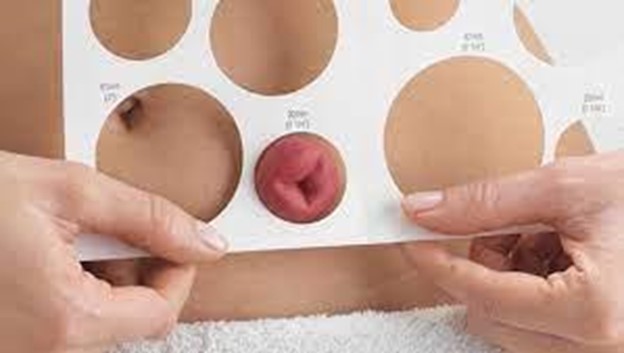A nurse is using a Doppler ultrasound stethoscope to assess the pedal pulses of a client who has peripheral vascular disease. Which of the following actions should the nurse plan to take?
Exert firm pressure when placing the probe.
Apply the probe to the exterior aspect of the ankle.
Move the probe until a whooshing sound is present.
Hold the probe at a 30° angle to the blood vessel.
The Correct Answer is C
Choice A rationale:
Exerting firm pressure when placing the probe (Choice A) is not recommended because it can potentially compress the blood vessels and impede blood flow. This can lead to inaccurate readings and compromise the assessment of the pedal pulses in a client with peripheral vascular disease.
Choice B rationale:
Applying the probe to the exterior aspect of the ankle (Choice B) is not the standard approach for assessing pedal pulses. The pedal pulses are typically assessed on the dorsal (top) and posterior (back) aspects of the foot, as well as the lateral (side) aspects of the ankle. Placing the probe on the exterior aspect of the ankle might not yield accurate results.
Choice C rationale:
Moving the probe until a whooshing sound is present (Choice C) is the correct action when using a Doppler ultrasound stethoscope to assess pedal pulses. The whooshing sound, known as "Doppler sound," indicates the presence of blood flow. The nurse should gently maneuver the probe until this sound is heard, allowing for an accurate assessment of the pulses and blood flow status.
Choice D rationale:
Holding the probe at a 30° angle to the blood vessel (Choice D) is not a standard practice for assessing pedal pulses with a Doppler ultrasound stethoscope. The nurse should place the probe directly over the pulse site and adjust its position until the Doppler sound is detected.
Nursing Test Bank
Naxlex Comprehensive Predictor Exams
Related Questions
Correct Answer is D
Explanation
Choice A rationale:
Apply the skin sealant on damp skin. Rationale: Applying skin sealant on damp skin is not the recommended approach for securing an ostomy appliance. It's important to ensure that the skin is clean and dry before applying the sealant or the skin barrier. Moisture can compromise adhesion and lead to skin irritation or appliance detachment.
Choice B rationale:
Remove the appliance before emptying the pouch. Rationale: Removing the appliance before emptying the pouch is not a necessary step when changing an ostomy appliance. Typically, the pouch can be emptied without removing the entire appliance, which helps maintain the seal and reduces unnecessary skin exposure.
Choice C rationale:
Ensure that the skin is slightly damp for better adhesion of the pouch. Rationale: Ensuring that the skin is slightly damp is not advisable for better adhesion of the pouch. The skin should be completely dry before applying the pouch to ensure proper adhesion. Moisture on the skin can lead to leakage or detachment of the appliance.
Choice D rationale:
Trace the size of stoma onto the skin barrier. Rationale: This choice is the correct answer because tracing the size of the stoma onto the skin barrier ensures a precise fit, which is crucial for preventing leaks and maintaining the integrity of the ostomy. A proper fit also helps in preventing skin irritation and discomfort. Choosing the correct barrier size based on the stoma's dimensions is a key aspect of effective ostomy care.

Correct Answer is C
Explanation
Choice A rationale:
Positioning the client so that they are lying flat (Choice A) is not the appropriate action after evisceration. Evisceration is the protrusion of internal organs through a wound, and lying flat could potentially put pressure on the exposed organs and worsen the situation.
Choice B rationale:
Increasing the client's oral fluid intake (Choice B) is generally a good practice for postoperative care, but it is not the priority in the case of evisceration. The primary concern is protecting the exposed organs and preventing infection.
Choice C rationale:
Preparing the client for emergency surgery (Choice C) is the correct action after observing evisceration. Evisceration is a surgical emergency, and the client needs immediate medical intervention to repair the wound and secure the exposed organs.
Choice D rationale:
Applying gentle pressure to the dressed wound (Choice D) is contraindicated in the case of evisceration. Applying pressure could further damage the exposed organs and increase the risk of infection.
Whether you are a student looking to ace your exams or a practicing nurse seeking to enhance your expertise , our nursing education contents will empower you with the confidence and competence to make a difference in the lives of patients and become a respected leader in the healthcare field.
Visit Naxlex, invest in your future and unlock endless possibilities with our unparalleled nursing education contents today
Report Wrong Answer on the Current Question
Do you disagree with the answer? If yes, what is your expected answer? Explain.
Kindly be descriptive with the issue you are facing.
